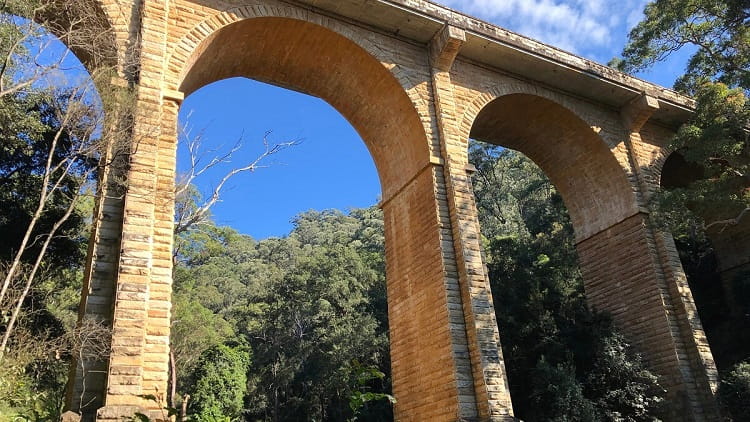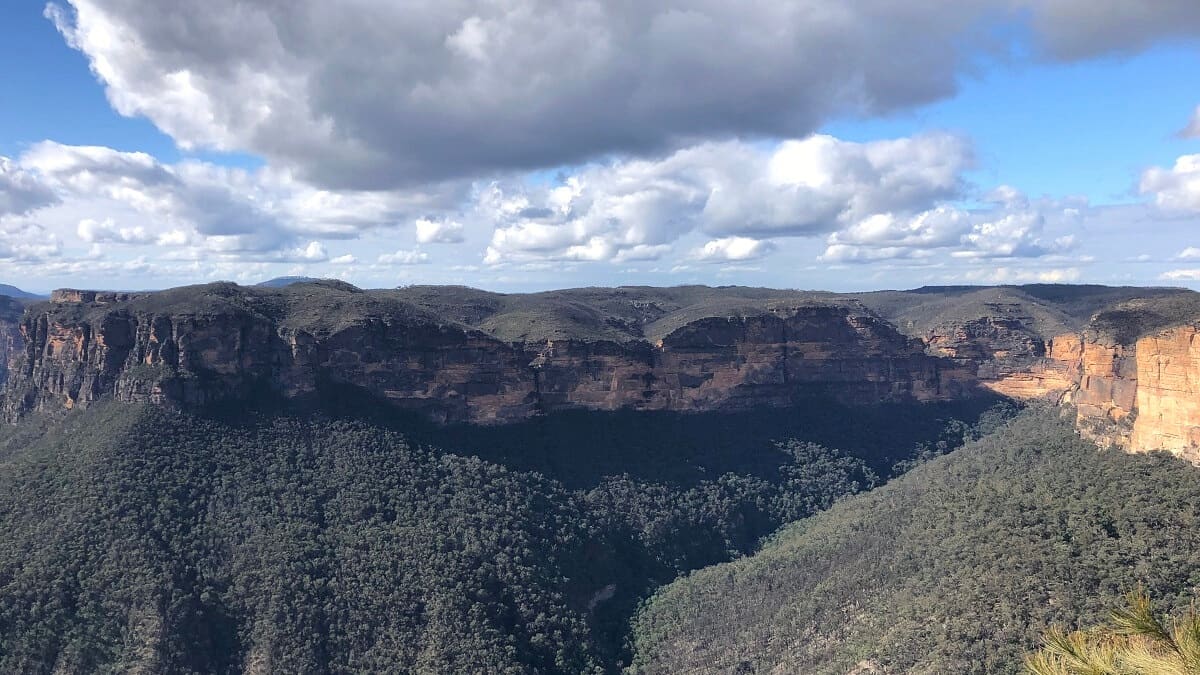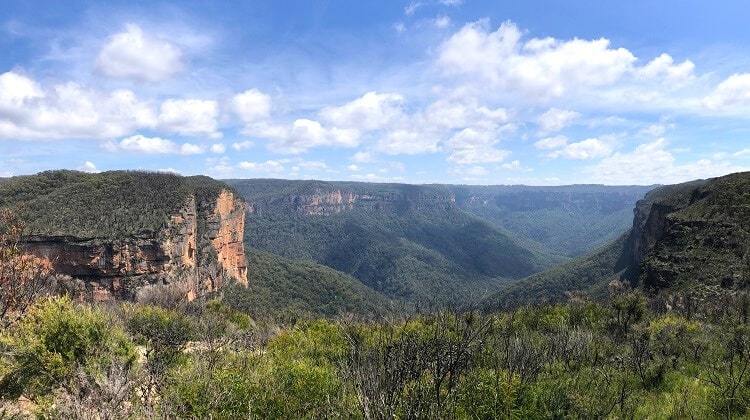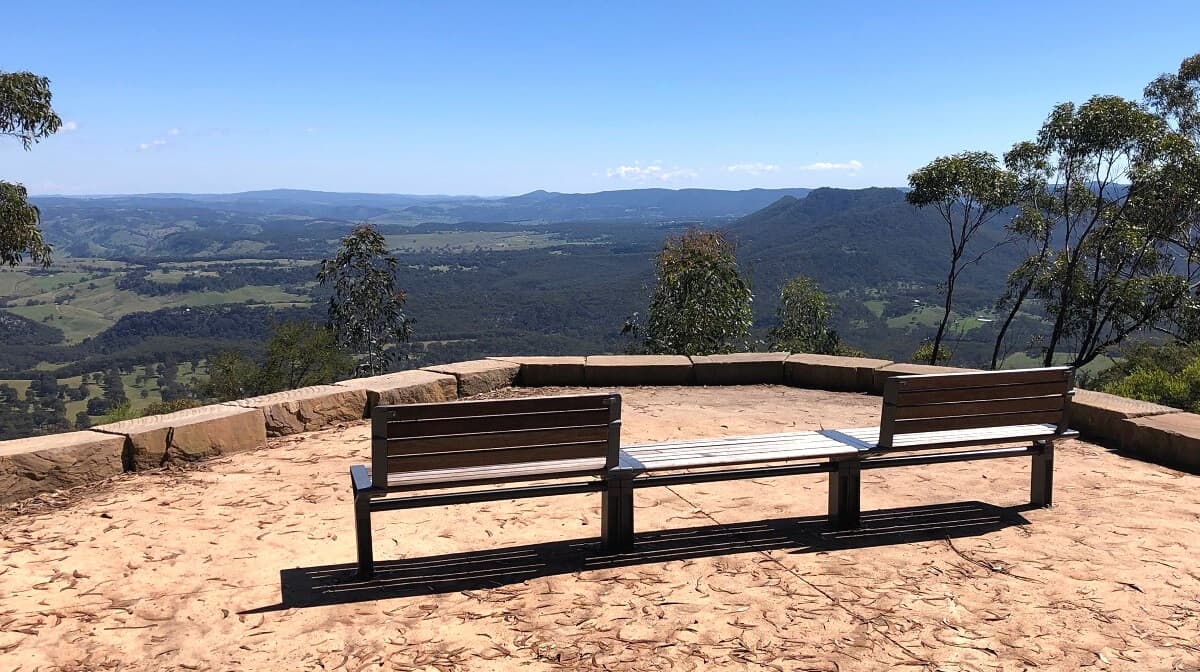Last updated: April 8, 2024
The historic Lapstone Zig Zag Walk is an exciting bushwalking trail in Glenbrook that follows an old railway. This railway was built and used in the second half of the 19th century.
The walking track leads to the Top Points Lookout and the Knapsack Bridge, an imposing sandstone arch viaduct that was built to carry the Zig Zag Railway line across the Knapsack Gully.
In this article, we’ll share everything you need to know about the Knapsack Bridge and the walk to get there.
| Lapstone Zig Zag Walk (to Knapsack Gully) | |
|---|---|
| Distance: | 3 km (return) |
| Duration: | 1.5 hours |
| Grade: | Moderate (steep sections) |
| Wheel-friendly: | Yes (until the Top Points Lookout) |
| Dog-friendly: | Yes (on a lead) |
How to Get There
The walking track starts from the small car park at the very end of Knapsack Street in Glenbrook (see map location).
To get there, turn into Knapsack Street from the Great Western Highway. Look out for the big blue RAAF signpost.
An alternative way to get to the Knapsack Viaduct is via the car park at the start of Mitchells Pass further north in Glenbrook (see map location).
The walk from there to the viaduct follows the former Great Western Highway. This is an easy and flat walking trail.
Map
The map below shows the Lapstone Zig Zag Walk from the Knapsack St car park to the Top Points Lookout, from where you can walk down the stairs to the bridge.
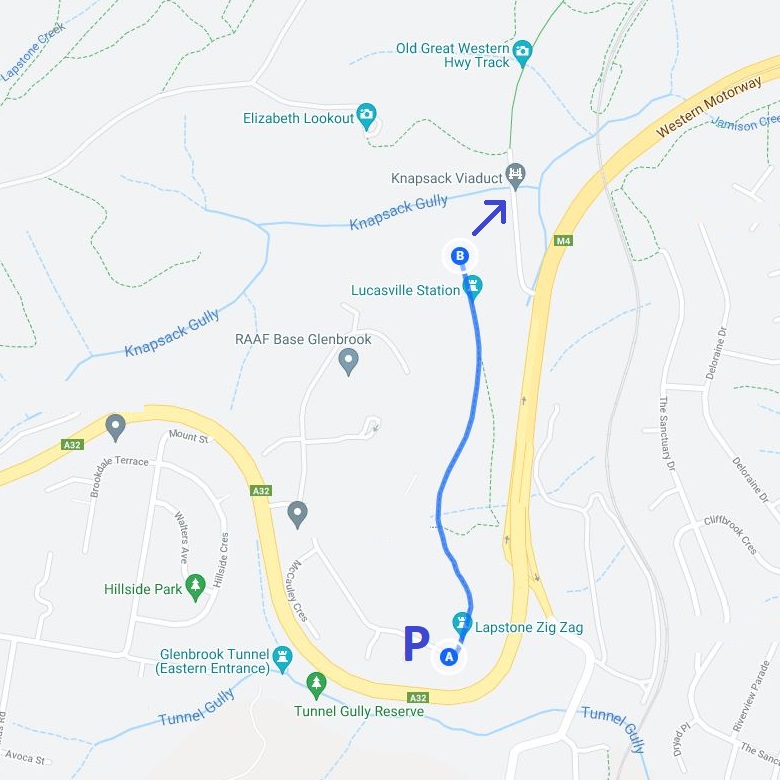
Lapstone Zig Zag Track Notes
The Lapstone Zig Zag was a railway section between the Emu Plains and Blaxland train stations on the Main Western Railway.
The Knapsack Viaduct was built as part of this railway section.
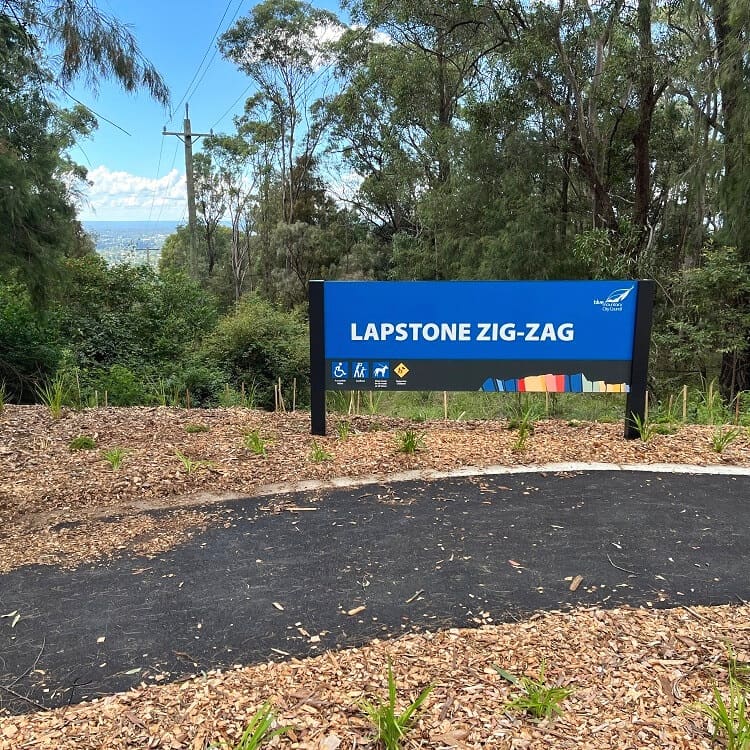
The walking track to the viaduct is moderately challenging, but mostly because there is some steep climbing involved.
Wearing good hiking shoes is recommended, and a bottle of water will also come in handy after climbing the stairs!
1. Quarry Lookout
Once you’ve parked your car, head into the bush at the big signpost to start the hike to the Knapsack Viaduct along the old Lapstone Zig Zag railway line.
The first section of the walk is an accessible, shared, asphalt walking path of approximately 900 metres leading to the Top Points Lookout.
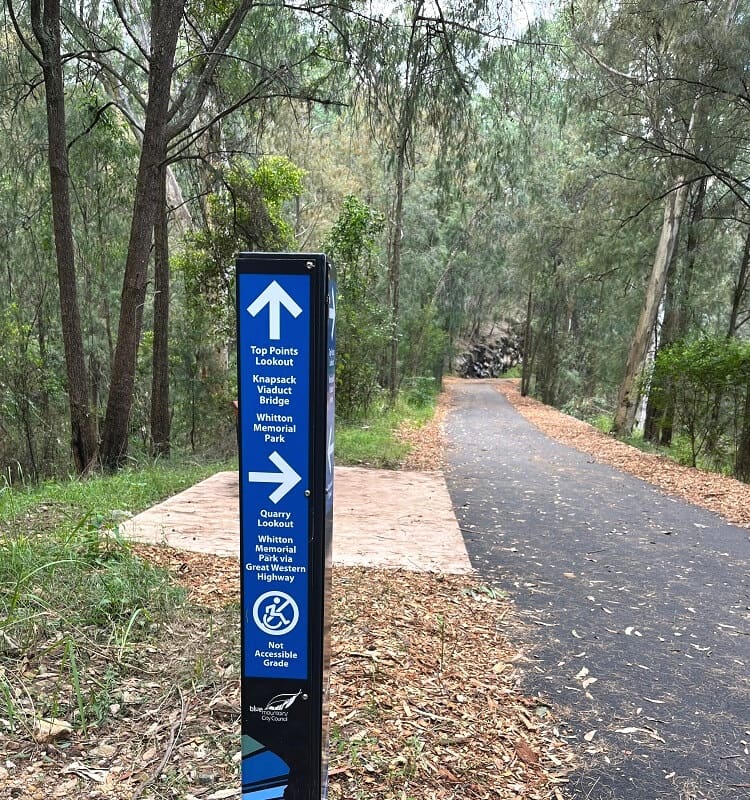
But before we get there, there are a couple of other highlights to point out, such as the Quarry Lookout. The side trail to this lookout is signposted (see picture above).
The Quarry Lookout isn’t spectacular by any means, but if you’re not in a hurry, you may as well go and check it out.
2. Lucasville Station
Towards the end of the sealed walking path is the Lucasville Station, but it’s easy to miss if you don’t look for it.
The old Lucasville railway station opened in 1877 to accommodate Australian politician John Lucas who owned a house close by.
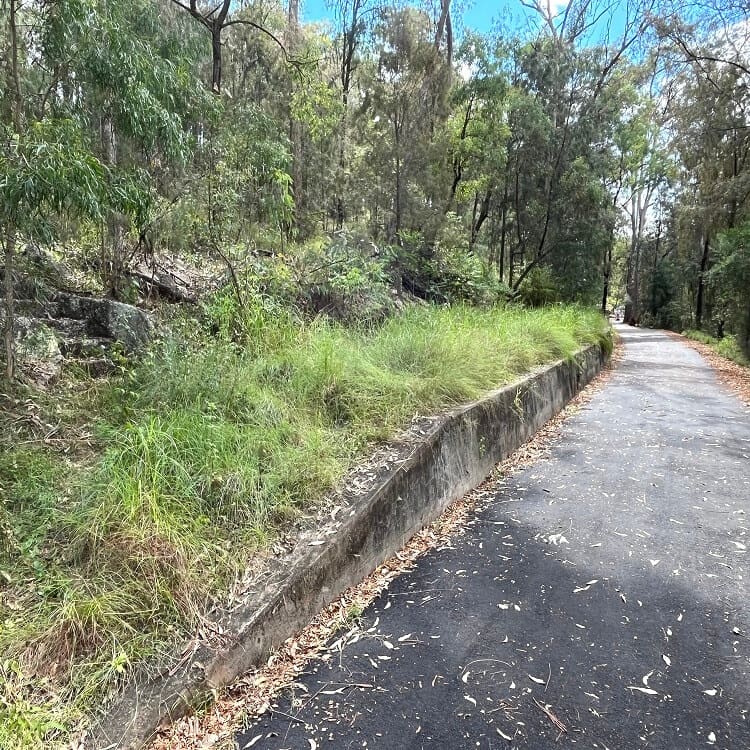
That house, which was called Lucasville, is now gone, but traces of its access paths and gardens are still visible. You might be able to find these remnants by walking up the concrete stairs at the station and heading into the bush.
After so many years of neglect, there isn’t much left of Lucasville Station today, but that’s also what makes this spot so intriguing.
3. Top Points Lookout
At the end of the sealed section of the Lapstone Zig Zag Walk is the newly built Top Points Lookout.
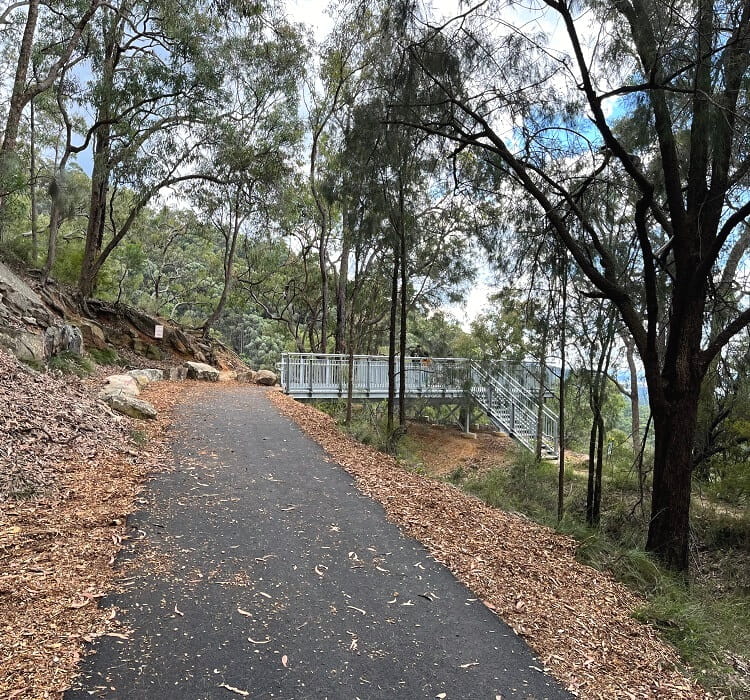
The Top Points Lookout is a large, elevated platform offering panoramic views over the Cumberland Plain, the Knapsack Gully, and the Knapsack Bridge.
While the views are a bit obscured by the many trees, it’s still a beautiful lookout to visit.
4. Knapsack Stairs
Once you’ve finished admiring the views, it’s time to start the descent via the Knapsack Stairs to the Knapsack Bridge.
It’s quite a steep descent with over 100 wooden steps. Easy on the way down, but more challenging on the return trip back up.
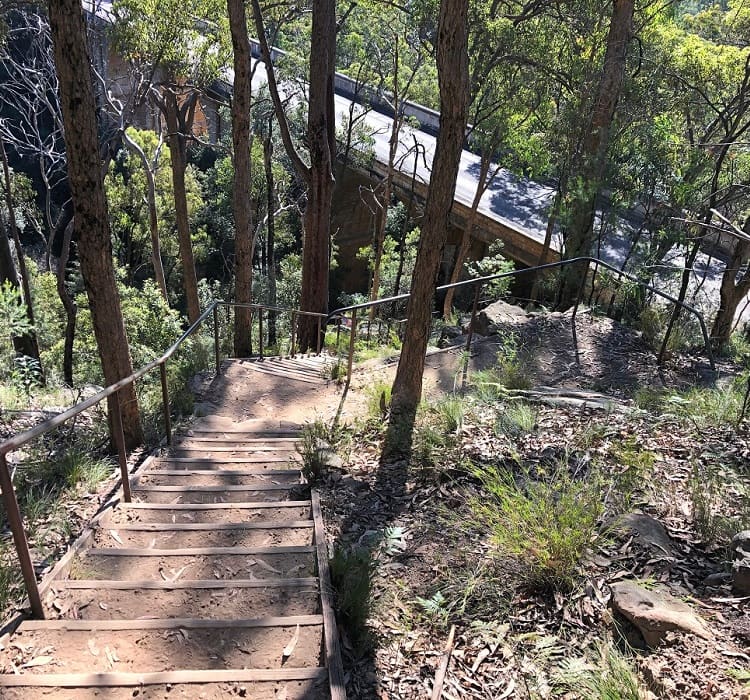
By going down the stairs, you’re essentially going from one section of the old zigzag railway line to another section lower on the escarpment.
Once you’ve reached the top of the bridge, it’s hard to imagine that this incredible piece of engineering was built nearly two centuries ago.
After the closure of the Lapstone Zig Zag railway in 1892, the viaduct was used as part of the Great Western Highway from 1926 until 1993, when the M4 Western Motorway was opened.
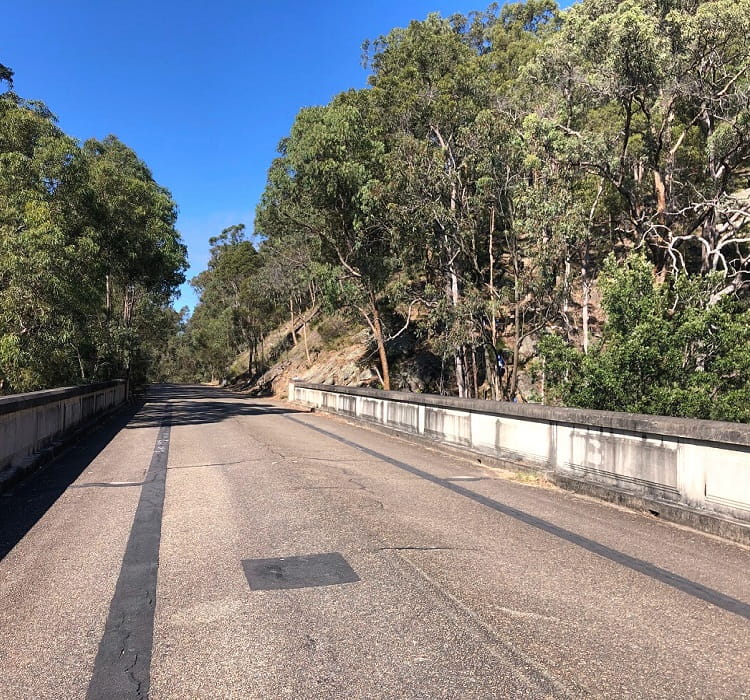
In 1995 the viaduct was reopened to the public as part of the Lapstone Zig Zag walking track that we’re discussing in this article.
From railway viaduct to highway viaduct to pedestrian viaduct; the bridge has quite a fascinating history over the course of almost two centuries.
5. Knapsack Gully
For the best views of the bridge, it’s a must to do the walking trail that goes down to the gully. That’s where you get to see the bridge from below.
From the side of the bridge, at the bottom of Knapsack Stairs, follow the walking path underneath one of the smaller arches.
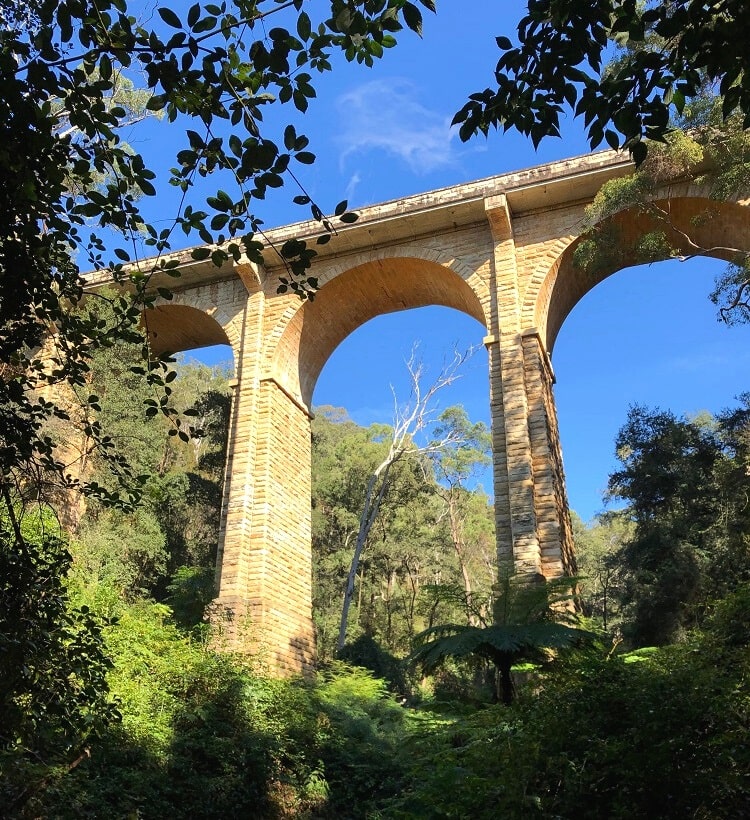
As you make your way down into the valley to the Knapsack Gully crossing, the views of the bridge become better and better.
It’s quite a steep descent into the gully, but it’s only a short section, and the path is relatively easy to navigate.
6. Elizabeth Lookout (Optional)
Once you’ve reached the bottom and crossed the gully, you have the option to continue the trail to the Elizabeth Lookout.
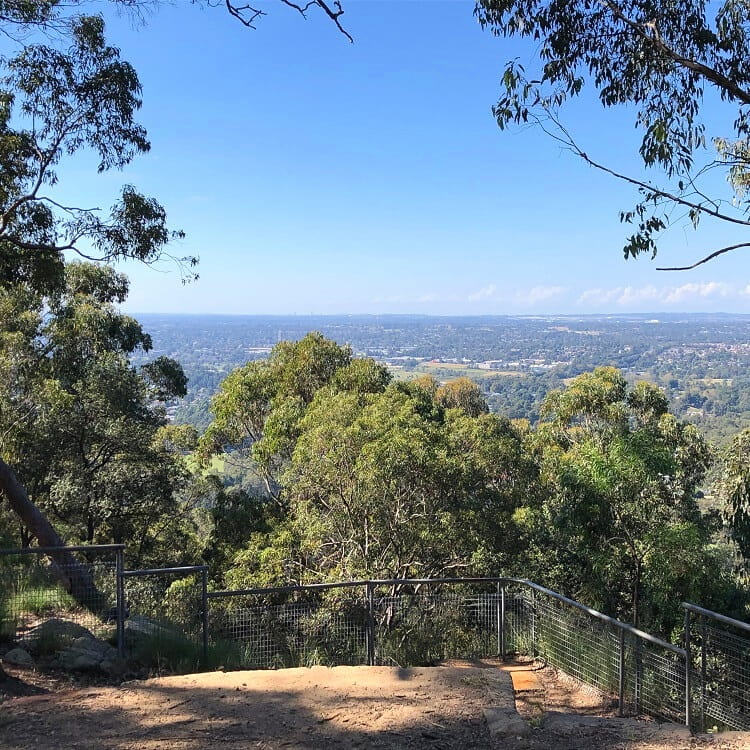
That lookout is pretty good, with beautiful district views of Penrith and beyond. However, to get there, you do need to undertake a steep hike out of the valley and up the hill.
If you’re not up for it, simply retrace your steps back up to the top of the bridge and then back to the car park via the Knapsack Stairs and the main walking trail.
About the Knapsack Viaduct
Following the first crossing of the Blue Mountains in 1813 by Blaxland, Lawson and Wentworth, various ideas were put forward to build roads and railways into and over the Blue Mountains.
Some of the oldest roads into the Blue Mountains still exist today, such as Cox’s Road, Old Bathurst Road and Mitchells Pass, which includes the heritage-listed Lennox Bridge.
Lapstone Zig Zig Railway
The first railway into the Blue Mountains was the Lapstone Zig Zag railway, designed by John Whitton and built by William Watkins. To gain height and conquer the steep escarpment between Emu Plains and Blaxland, a zigzag design of the railway was deemed necessary.
This unique railway was constructed between 1863 and 1865, and officially opened in 1867. Part of this massive project was the construction of the Knapsack Bridge, a sandstone arch viaduct, to carry the railway across the Knapsack Gully.
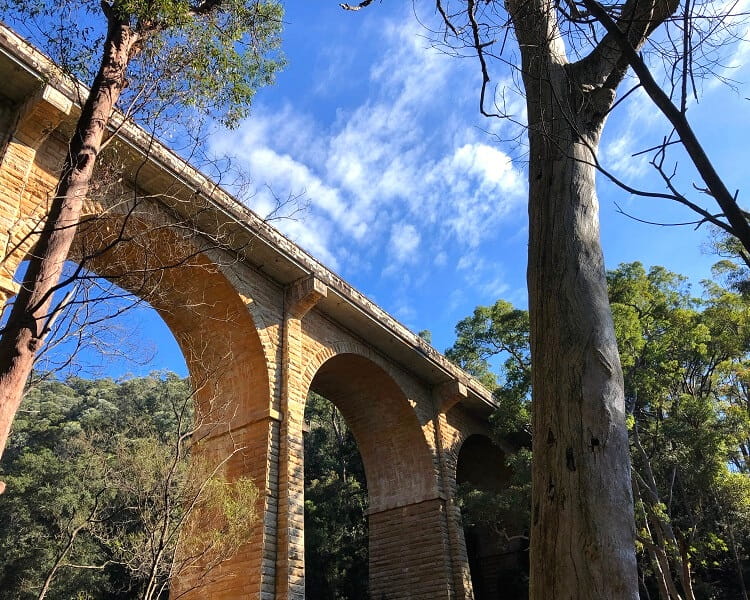
The Lapstone Zig Zag was the first zigzag-designed railway in the world that was built as part of a larger main-line railway.
Glenbrook Deviation
While the Lapstone Zig Zag railway was considered a success, it was closed in 1892 as a result of the deviation of the Main Western Railway via Glenbrook.
This deviation was subsequently replaced by a second Glenbrook deviation, and the route of that second deviation is still in use today.
After the closure of the Zig Zig railway, the Knapsack Viaduct was still used as part of the first Glenbrook deviation. However, the viaduct was bypassed with the second deviation and fell into disuse.
Former Great Western Highway
In 1926, the Knapsack Bridge received a second lease of life as it became part of the former Great Western Highway.
This lasted until 1993, when construction of the M4 Western Motorway was completed, bypassing the former Great Western Highway.
Since 1995, the Knapsack Viaduct has been open to the public as part of the Lapstone Zig Zag walking track. Both the Lapstone Zig Zag and the Knapsack Viaduct are heritage-listed.
| Knapsack Viaduct | |
|---|---|
| Opened: | 1867 |
| Arches: | 7 |
| Height: | 40 metres above the gully |
| Length: | 120 metres |
| Original width: | 9 metres |

